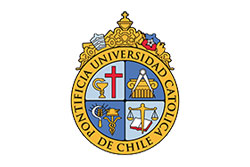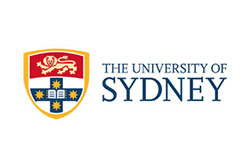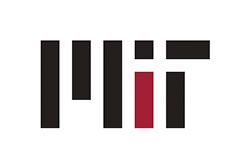Source: EMBARQ Brasil. All photos from EMBARQ Brasil.
 Our Centre of Excellence hosted the Bus Rapid Transit (BRT) Workshop: Experiences and Challenges on July 12 in the Auditório Rio Ônibus at Rio de Janeiro. Organized by EMBARQ Brazil, sponsored by Fetranspor and VREF (Volvo Research and Education Foundations), the course brought together about 40 participants between professionals, operators, entrepreneurs and researchers of RT systems. Juan Carlos Muñoz (BRT CoE), Luis Antonio Lindau (EMBARQ Brazil) and Lélis Teixeira (Fetranspor), opened the meeting which was attended by international experts in the area.
Our Centre of Excellence hosted the Bus Rapid Transit (BRT) Workshop: Experiences and Challenges on July 12 in the Auditório Rio Ônibus at Rio de Janeiro. Organized by EMBARQ Brazil, sponsored by Fetranspor and VREF (Volvo Research and Education Foundations), the course brought together about 40 participants between professionals, operators, entrepreneurs and researchers of RT systems. Juan Carlos Muñoz (BRT CoE), Luis Antonio Lindau (EMBARQ Brazil) and Lélis Teixeira (Fetranspor), opened the meeting which was attended by international experts in the area.
In order to present the key issues in the design and successful implementation of BRT, the team of speakers was composed by Dario Hidalgo (EMBARQ), Luis Antonio Lindau (EMBARQ Brazil), Nigel Wilson (MIT), Juan Carlos Muñoz and Ricardo Giesen (Pontificia Universidad Católica de Chile), and Rosario Macario (Technical University of Lisbon), all members of our Centre.
 The first speaker of the morning, Hidalgo pointed out the main features and brief history of BRT systems and BHLS the world. The expert showed how the BRT systems become popular in recent years, from data presented by BRTdata.org platform that gathers information on BRT and bus lanes around the world. Besides from Brazil, currently India and China stand out because of their investments in transportation on wheels. «However, it is interesting to note that the BRT needs to be developed in accordance with the conditions of each city» says Hidalgo to cite the Metrobus in Mexico City, where the recent Line 4 has a different concept from the rest of the system, through narrow roads with lower vehicles.
The first speaker of the morning, Hidalgo pointed out the main features and brief history of BRT systems and BHLS the world. The expert showed how the BRT systems become popular in recent years, from data presented by BRTdata.org platform that gathers information on BRT and bus lanes around the world. Besides from Brazil, currently India and China stand out because of their investments in transportation on wheels. «However, it is interesting to note that the BRT needs to be developed in accordance with the conditions of each city» says Hidalgo to cite the Metrobus in Mexico City, where the recent Line 4 has a different concept from the rest of the system, through narrow roads with lower vehicles.
At the end of the presentation, the expert from EMBARQ praised the effort of Rio de Janeiro in the construction and service quality of Transoeste BRT and added: «We hope more mayors opt for BRT. For its rapid implementation, is a system that can be created, executed and delivered in the same term, if there is political will, of course».
 Besides the quality, it is important to pay attention to safety. For Luis Antonio Lindau, a correct design of a BRT system can save many lives. «Being in a BRT today is much safer than being in a car», he says. According to the expert, well designed BRT projects can reduce 30% to 70% the number of accidents on roads where the corridors are implemented. To avhieve this goal, it is necessary to look again at the basic issues of road safety still in the design phase, many aimed at the Traffic Safety on Bus Corridors, produced by EMBARQ Brazil.
Besides the quality, it is important to pay attention to safety. For Luis Antonio Lindau, a correct design of a BRT system can save many lives. «Being in a BRT today is much safer than being in a car», he says. According to the expert, well designed BRT projects can reduce 30% to 70% the number of accidents on roads where the corridors are implemented. To avhieve this goal, it is necessary to look again at the basic issues of road safety still in the design phase, many aimed at the Traffic Safety on Bus Corridors, produced by EMBARQ Brazil.
Lindau drew attention to some eminent risks as bus lanes in counter-flow and lack of signage for pedestrians and motorists. For the specialist, the solution is to prioritize the pedestrian ways at the implementation, with signs, walkways, etc.
Research to know users
 Nigel Wilson, professor and researcher at MIT, talked about the importance of observing the user experience. «Customer satisfaction surveys are essential to map people’s wishes in relation to the system. Thus, we go from a the static view of the operator to a dynamic and real view of the user», he explains. For the expert, the great tool that we have today is the smartphone. The device helps to gather data and has applications that make life easier for those who use public transport systems.
Nigel Wilson, professor and researcher at MIT, talked about the importance of observing the user experience. «Customer satisfaction surveys are essential to map people’s wishes in relation to the system. Thus, we go from a the static view of the operator to a dynamic and real view of the user», he explains. For the expert, the great tool that we have today is the smartphone. The device helps to gather data and has applications that make life easier for those who use public transport systems.
Then Wilson presented comparative numbers of a research conducted in the public transport systems of London and its challenges. The expert noted that pre-payment cards such as the Oyster in the English capital, facilitate data collection and can complement field research or those made via the internet.
 In the afternoon, data and users continued to be the focus of the presentations. Ricardo Giesen and Juan Carlos Muñoz, both researchers at PUC, talked about the importance of uncovering and use numbers effectively. «We need to transform data into information» said Giesen. The expert showed methodologies to manage the operation of the system and thus map its efficiency as well as the behavior of users.
In the afternoon, data and users continued to be the focus of the presentations. Ricardo Giesen and Juan Carlos Muñoz, both researchers at PUC, talked about the importance of uncovering and use numbers effectively. «We need to transform data into information» said Giesen. The expert showed methodologies to manage the operation of the system and thus map its efficiency as well as the behavior of users.
Muñoz presented effective solutions that make transportation more efficient, and therefore more attractive. One idea that has been adopted by some Brazilian cities is the exclusive route for public transport, taking the bus congestion caused by excessive private cars. High capacity bus, strategically placed stops and prepayment were other possible measures aimed to streamline the operation of the system. «Rethinking the system stops the bus, using express lines, can substantially improve the quality of service» said Juan Carlos. Finally, the expert showed simulation results of the vehicles frequency optimization research.
Contractual and regulatory aspects
 The last presentation of the workshop was given by Rosário Macário, from the Technical University of Lisbon. The expert showed the impacts that occur in the structure of urban mobility when designing a new system, from the contractual view. According to Rosario, there are several factors that converge to a successful deployment that must be thought of holistically. «It takes a strategic view and not just operational. Integration with other modes of transport, for example, is essential to meet the need of people who use a system», she explains.
The last presentation of the workshop was given by Rosário Macário, from the Technical University of Lisbon. The expert showed the impacts that occur in the structure of urban mobility when designing a new system, from the contractual view. According to Rosario, there are several factors that converge to a successful deployment that must be thought of holistically. «It takes a strategic view and not just operational. Integration with other modes of transport, for example, is essential to meet the need of people who use a system», she explains.
Rosario pointed to possible political challenges and economic risks to the implementation of systems. The institutional hierarchy, can sometimes become a barrier for the projects to be executed in a reasonable time and with quality. Also contracts must be conducted carefully and detailed with managers and operators to ensure the organization’s legal system.
Presentations available to download:
- Juan Carlos Muñoz: Bus Rapid Transit (BRT) Workshop: Experiences and Challenges / Future of BRT: Flexible Capacity Operations
- Dario Hidalgo: BRT and BHLS Evolution Worldwide
- Luis Antonio Lindau: Bus Rapid Transit and Traffic Safety
- Ricardo Giesen: Fare Collection in the Broader Payments Environment
- Nigel Wilson: The Customer Experience
- Rosário Macário: Regulatory and Contractual Aspects












